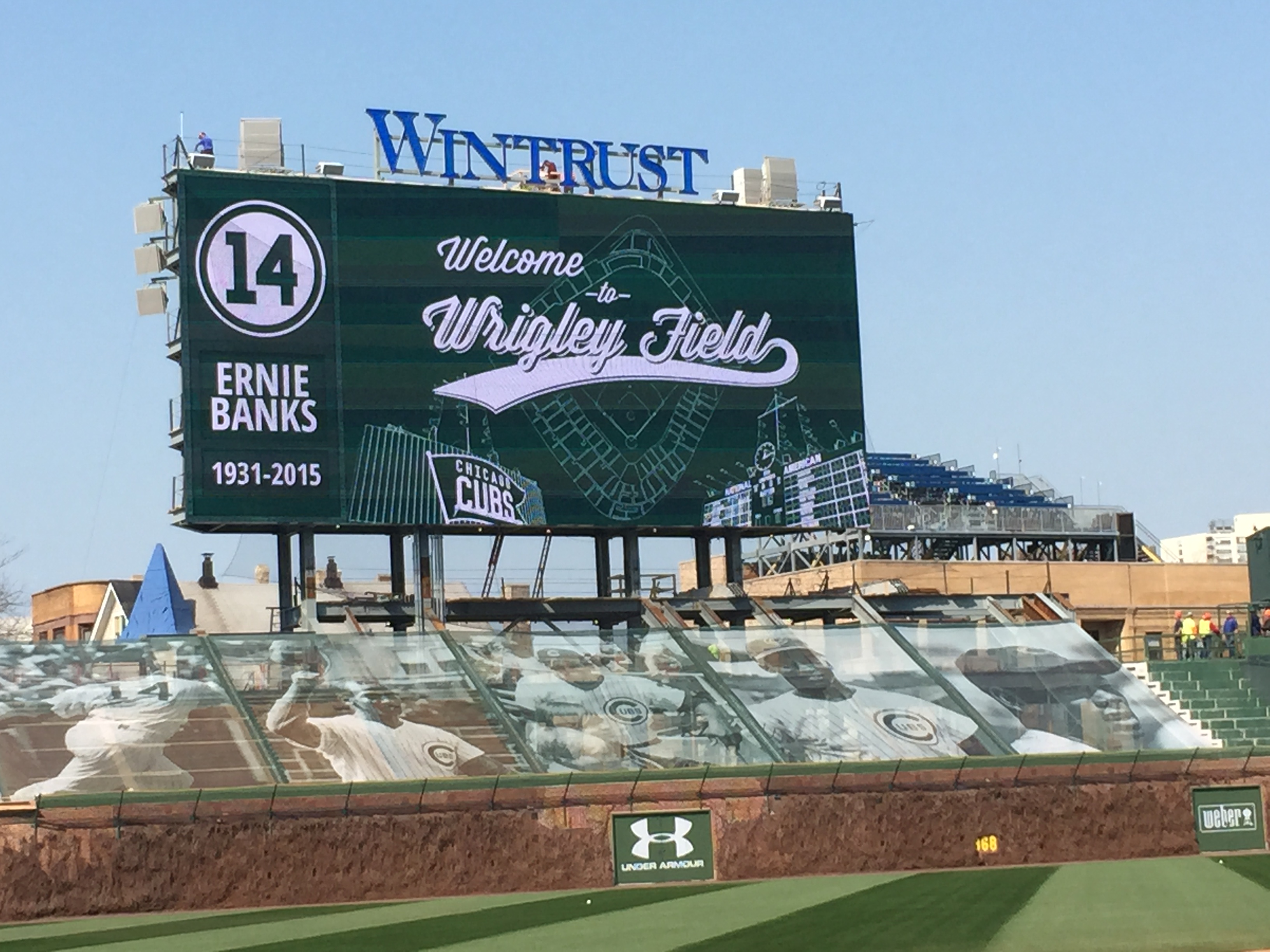“Then on a diet of the blood of snakes, toads, and all the putrid life of the Mississippi, slowly, Lestat became something like himself again. Claudia … You’ve been a very, very, naughty little girl.”
Aside from being a pretty-close-to-iconic line at a pretty-much-fantastic moment in a pretty-darn-good movie, that line is what comes into my mind, on the regular, when I think of the bleacher construction at Wrigley Field.
Maybe that says more about me than it does about Wrigley Field*, but I’ve been eagerly awaiting the full opening of the bleachers for quite some time. Slowly accreting itself back to health—or something like it—Wrigley Field has now been restored to its full seating capacity thanks to the re-opening of the right-field bleachers last Thursday.
I tracked the progress with excessive interest not only because right field is my preferred seating area at Wrigley, but also for the reasons painstakingly laid out here at BP-Wrigleyville twice before in articles on early-season attendance here and here.
To reiterate the explanation for why I am so interested:
“For the Chicago Cubs, particularly in recent years, attendance has been something of a sore subject, as years of decline and then a deep rebuilding process have eroded annual attendance from a high of more than 3.25 million in 2007 and 2008, to just 2.65 million in 2013 and 2014. As a team without a mega television contract secured just yet, the Cubs are more sensitive to attendance as a driver of revenue than many other teams around baseball. And, since the mantra of the Ricketts Family is that the “closed circuit” of the organization puts revenue back into baseball operations after expenses, fluctuations in revenue—positive or negative—directly impact the organization’s baseball flexibility.
Thus, keeping an eye on attendance as the Cubs become more competitive is more important than you might otherwise think.
With significantly more buzz heading into the 2015 season than in recent years past, it would be fair to expect an early bump in attendance at Wrigley Field when compared to the last couple years. The headwind there, of course, is the lack of bleacher seating right now at the park, as the Cubs’ efforts to renovate the bleachers bled into the season. With the left- and center-field bleachers not expected to be open until May 11 (right field is slated for mid-June), the Cubs are down around 6,000 seats in their approximately 41,000-seat ballpark.”
At the time of the last check in, the Cubs had just opened the left and center field bleachers, and had already seen attendance improvement in the early going even without the use of the bleachers.
How have things looked now that the full bleachers are open?
Well, the full bleachers were available for the Cubs’ most recent five games, a four-game Thursday through Sunday set against the Reds, and Tuesday night’s loss to the Indians. The Cubs’ attendance for those five games, in order: 35,031, 40,016, 40,693, 33,201, and 35,914.
Every one of those games has a higher attendance figure than the Cubs’ per-game mark for 2015, which is 33,156. Moreover, that per-game figure is up a little over 700 tickets per game through 31 home dates in 2014. In other words, attendance was already up, and then trended even further up once the full bleachers opened.
Seasonality, of course, plays a part, as does the weekend. But consider that Friday’s and Saturday’s games against the Reds were the first two over 40,000 in attendance for the Cubs this year. Last season, the Cubs exceeded 40,000 only twice all year, and it wasn’t until the end of July, also a Friday and Saturday, against the Cardinals.
So far—as attendance goes—so good.
Now, perhaps, the real watch begins. With seating capacity essentially back to normal and the warm summer months upon us, we will truly be able to see if incremental attendance is going to be up enough to make a substantial difference in the revenue picture. So long as the Cubs remain compelling and competitive, there’s no reason to believe attendance will not be up.
*(In this scenario, if Wrigley Field is Lestat, who plays Claudia, the child vampire who tried to kill him? If you followed the multi-year renovation planning and approval saga, I’m sure you could come up with some stand-ins.)
